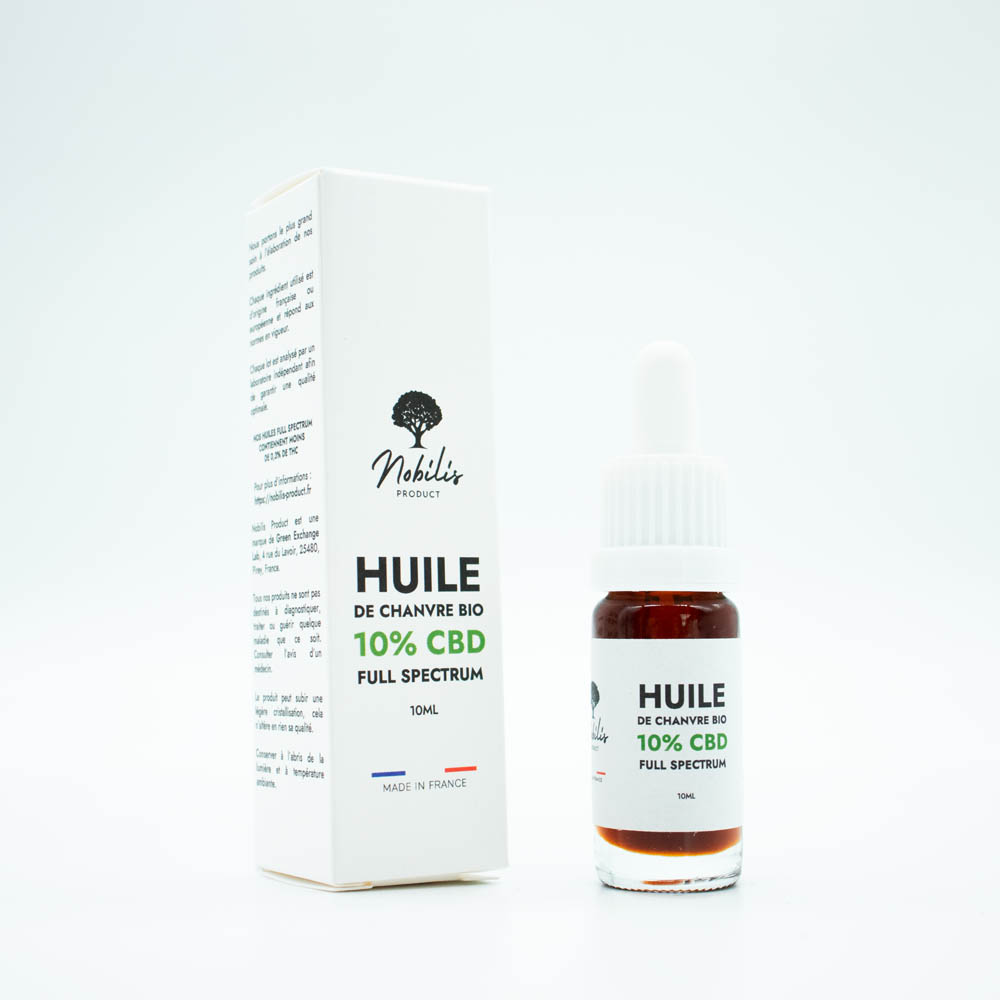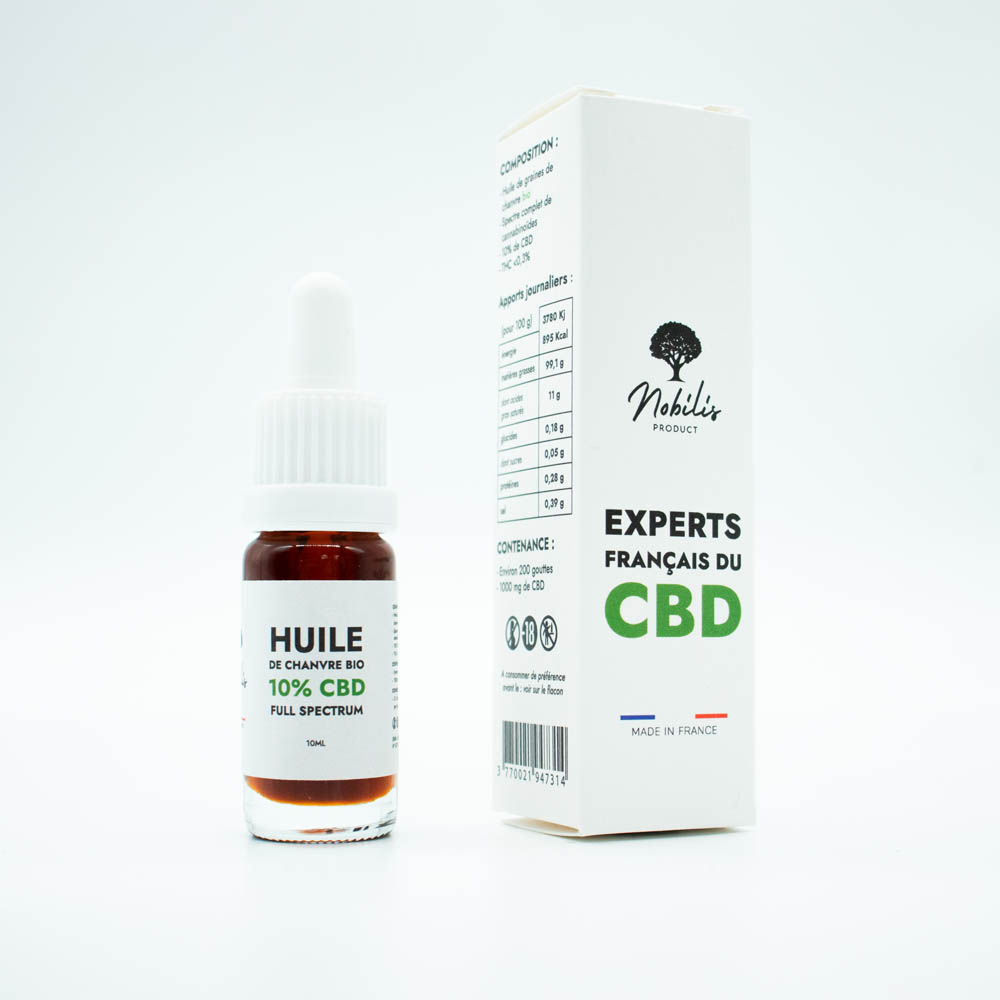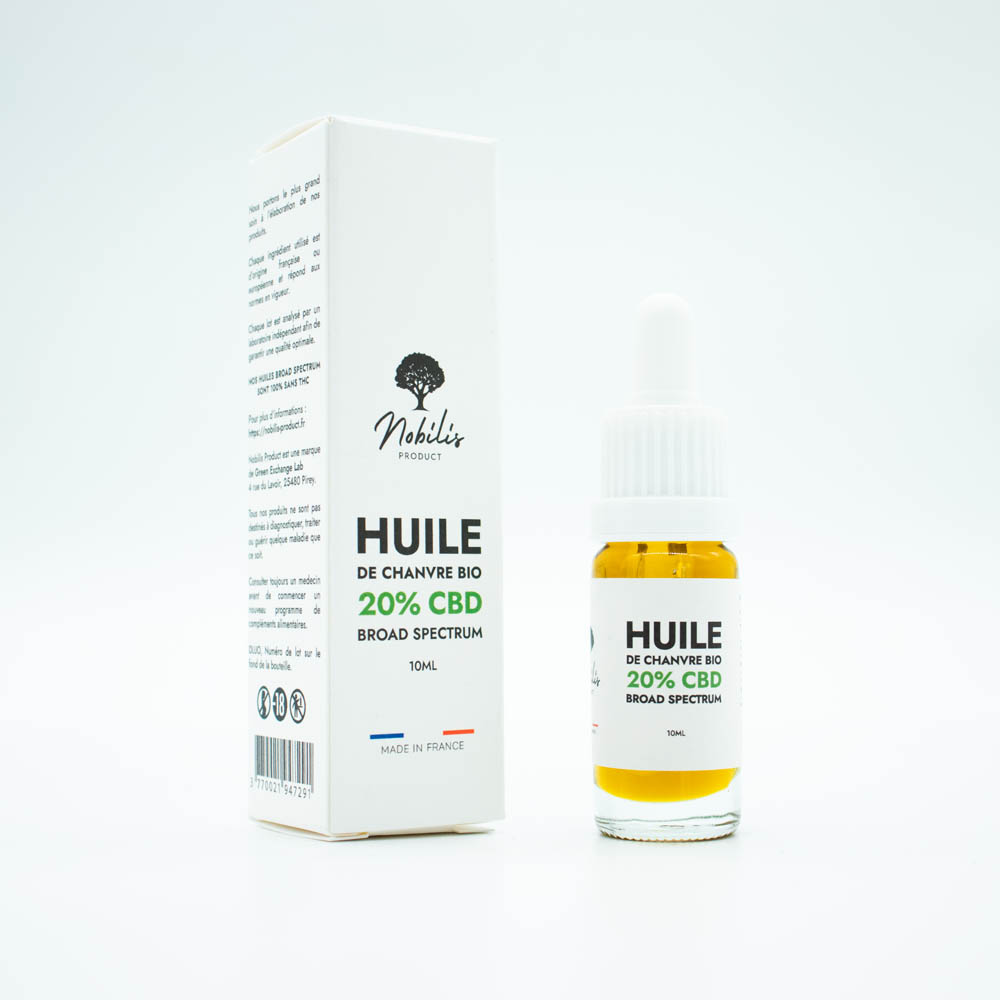Acne is the bane of most teenagers, but also of some adults. And despite the abundance of cosmetics designed for acne-prone skin, as well as the existence of specific dermatological treatments, many people can't find an effective solution for pimples, blackheads and other manifestations of acne.
At the same time, the use of certain plants is gaining ground in the beauty sector, as well as in skin health. In particular, CBD-enriched creams are appearing to combat acne.
In this article, we'll take a look at the scientific evidence in favor of CBD for improving the appearance and health of acne-prone skin.
Table of contents
Acne: causes, symptoms and treatments
Acne is a widespread skin condition. According to one study [1], it affects 60% of teenagers and 25% of adults, for a total of 6 million people in France.
What is acne?
Acne is an inflammatory dermatological disease of the pilosebaceous follicle.
In other words, the appearance of a pimple occurs when a hair follicle (aka pore) becomes clogged, either due to excess sebum or the accumulation of dead skin.
The blocked pore (blackhead or whitehead) thus becomes a breeding ground for dermal bacteria (normally present on the skin's surface) such as Propionibacterium acnes. This multiplication causes an imbalance that triggers an inflammatory response, manifested by swelling and redness of the skin. In other words, an acne pimple, also known as a "papule", forms.
Depending on the virulence of the inflammatory response, the pimple may fill with pus and become a pustule, or even lead to the formation of nodules and cysts, which can leave scars.
The intensity of acne varies considerably from one person to another. Some simply have oily skin and a few blackheads (retentional acne), while others have papules and pustules (inflammatory acne).
Finally, in 15% of adolescent cases, it's a severe form (acne conglobata or acne fulminans) requiring professional treatment.
What are the causes?
Acne is caused by excessive sebum production: the sebaceous gland at the tip of each hair in the dermis produces too much sebum. Sebum forms a hydrolipidic film that not only keeps the skin hydrated, but also protects it from external aggression.
Excess sebum is multifactorial. Possible causes include :
- Hormonal upheavals, mainly the fluctuation of sex hormones in adolescence, during the menstrual cycle, pregnancy and after childbirth. But also the overproduction of cortisol, a hormone associated with stress ;
- Diet and lifestyle: certain foods can aggravate acne, as can poor hygiene. However, excessive hygiene can also aggravate the problem!
- Genetics.
What about treatments?
From the cleansing gel specially formulated for acne-prone skin available in supermarkets, to the retinoid-enriched cream prescribed by a dermatologist, to the benzoyl peroxide treatment sold in parapharmacies, there's a whole range of solutions available for people suffering from mild to moderate acne.
In the most severe cases, acne treatment can include the use of antibiotics (topical or oral) to reduce bacterial proliferation, contraception to regulate hormones, and even dermatological interventions such as corticosteroid injections.
However, as we have already mentioned, in some cases the treatment proves ineffective, or leads to annoying side-effects such as irritated or even painful skin.
What is the link between CBD and skin health?
Cannabidiol (CBD), a harmless cannabinoid synthesized in hemp flowers, is the subject of numerous scientific studies in a wide variety of fields (epilepsy, multiple sclerosis, chronic pain, etc.).
And as you know, it could even help treat many skin problems such as psoriasis, eczema and acne.
What is the link between all these pathologies?
The endocannabinoid system.
A quick reminder of the endocannabinoid system
A vast network of transmitters with which all animals are equipped, the endocannabinoid system (ECS) is the reason why CBD (and all cannabinoids) is attracting so much interest in the scientific sphere.
In fact, cannabinoids have the ability to bind to SEC receptors and activate/inhibit a number of key physiological processes, such as body temperature, blood pH and so on. The aim is to maintain the body in a state of homeostasis, a state of equilibrium which guarantees good health.
Our bodies produce neurotransmitters (called endocannabinoids), but sometimes, for reasons unknown, these are synthesized in insufficient quantities. Indeed, some theories suggest that dysfunction of the endocannabinoid system is the cause of many chronic diseases such as diabetes, migraine, fibromyalgia... and perhaps acne. [2]
This makes sense, as endocannabinoid transmitters control: the nervous system, the immune system, the endocrine system and the digestive system.
Cannabinoid receptors in the epidermis
Receptors of the endocannabinoid system are distributed throughout the body. They are found in the brain, liver, intestine, uterus, pancreas ... and according to a 2020 study, on the surface of the skin. [3]
Indeed, the study report explains that: "CB1 and CB2 receptors are also found in epidermal keratinocytes, cutaneous nerve fibers, dermal cells, melanocytes, eccrine sweat glands and hair follicles."
Furthermore, the scientists also point out that: "recent research has shown the essential role of SEC in maintaining skin homeostasis and barrier function, and its deregulation has been implicated in various skin disorders such as atopic dermatitis, itching, acne, hair growth/hair loss and hyper/hypopigmentation."
Finally, this study concludes, among other things, that "given that SEC plays an important regulatory function in the skin, it is plausible that treatment with topical cannabinoids could be effective for certain disorders or for skin health in general."
However, the researchers point out that further research is needed into the route of CBD administration. We return to this point at the end of the article.
What are the potential benefits of CBD for acne-prone skin?
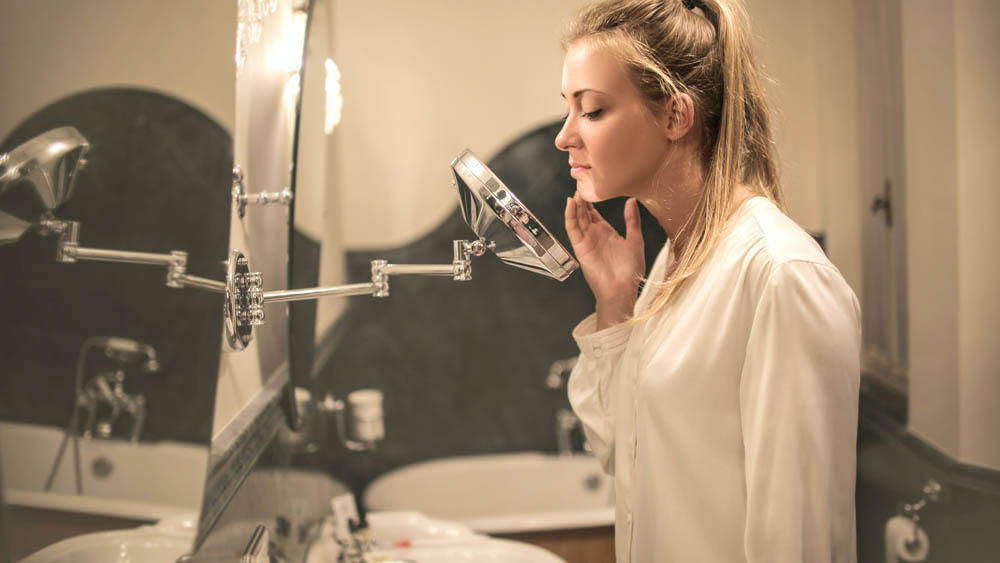
The use of plants and natural extracts for skin care is not new.
Whether it's aloe vera gel to preserve moisture, calendula cream to fight inflammation, or Tea Tree essential oil for its anti-bacterial effects, there are many natural solutions to fight acne.
But then, what are the potential benefits of CBD for acne-prone skin?
As we've just seen, CBD could act on the health of the epidermis via its action on the SEC. Let's now take a closer look at its possible effects.
Anti-inflammatory properties
As we explained earlier, the formation of acne pimples is caused by excessive inflammation of the hair follicle.
The anti-inflammatory effects of CBD are well known, notably its beneficial action on neuronal inflammation (CBD is a treatment for epilepsy and pain caused by multiple sclerosis).
As far as the skin is concerned, some studies also reveal that CBD can reduce skin inflammation via its action on inflammatory cytokines (TNF-α and IL-1β), which are cell-signaling proteins involved in regulating the immune response and inflammation. [4]
Applying CBD to an acne pimple could promote rapid healing.
Anti-bacterial action
All skin naturally harbors a community of bacteria, forming what is known as the cutaneous microbiome.
However, acne-prone skin tends to have a higher concentration of skin bacteria, particularly propionibacterium acnes (P. acnes) bacteria, which thrive in the skin's hair follicles and sebaceous glands.
These bacteria are normally present in moderate quantities on the skin, contributing to its balance, but in the event of imbalance, they can play a role in the development of acne.
Studies have highlighted the antibacterial action of CBD on certain bacteria involved in the development of acne, such as staphylococcus aureus and propionibacterium acnes. [5]
Applying CBD to the skin could help reduce the bacterial population and prevent the appearance of pimples.
Regulation of sebum production
The main cause of acne is excess sebum. And as we've said, the reasons for this disorder are multifactorial, which explains why it's difficult to find a suitable treatment.
In this sense, CBD could prove beneficial whatever the cause of excess sebum production.
Some studies suggest that CBD is capable of regulating sebaceous gland activity via its interaction with endocannabinoid receptors located in the dermis. And as we'll see in the next paragraph, CBD can also act on the other causes of sebum overproduction, namely, stress and certainhormonal upheavals. [5]
In this way, the application of CBD could help treat the skin problem at its source by controlling sebum secretion.
Anti-stress effects
As we've just said, CBD can help address another well-known cause of sebum overproduction: stress. Indeed, when stress becomes chronic, the body secretes an excess of a hormone called cortisol, which can induce excess sebum production.
It should also be noted that stress can affect the immune system, increasing susceptibility to skin infections and inflammation, which can contribute to the worsening of acne.
The anti-stress effects of CBD have been widely documented. In fact, CBD acts on the secretion of two hormones involved in inducing a state of relaxation:dopamine and serotonin. Moreover, CBD's relaxing action is also thought to improve sleep quality. [6]
Promotes hormonal balance
Finally, CBD, through its action on the endocannabinoid system, can also have a positive impact on the hormonal imbalances responsible, in part, for the appearance of acne pimples.
To the best of our knowledge, no study has looked into this aspect of CBD's effects on acne, but we think it's interesting to glimpse this potential benefit.
Indeed, as we said earlier, the main aim of the endocannabinoid system is to maintain a state of equilibrium. CBD could therefore help reduce the impact of hormonal upheavals, notably through its action on serotonin synthesis. Indeed, it has been shown that reduced synthesis of female sex hormones leads to a drop in the production of this hormone.
CBD can also be effective for PMS and painful periods.
How to use CBD for acne?
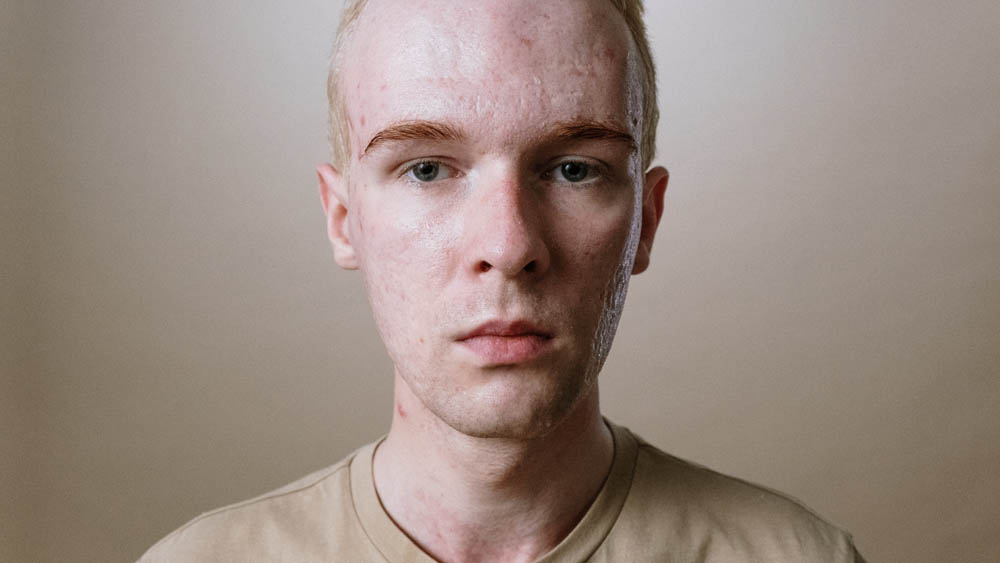
Now you know that CBD can potentially help combat skin problems. At different levels. The question is how best to use it! Here are a few tips.
Which CBD product to choose?
If you wish to use the properties of CBD on your acne, we recommend that you turn to products specifically formulated for this purpose. CBD-enriched creams for acne-prone skin generally contain other natural extracts that can potentially deliver better results.
If you prefer, you can also opt for CBD oil. In fact, since it's hemp seed oil enriched with CBD, you can enjoy the benefits of both hemp and CBD:
For your information, hemp seed oil is non-comedogenic, and what's more, it's rich in omega 3 and 6, which help nourish the skin.
Which route of administration?
Some studies show that, when it comes to treating acne, it's best to opt for topical application. Indeed, studies have shown promising results in the treatment of several skin diseases such as atopic dermatitis, psoriasis or contact dermatitis. [7]
However, if you want to enjoy the relaxing and regulating effects of CBD, then we recommend combining topical application with sublingual intake.
Purchasing a CBD oil in addition to a CBD acne cream is, in our opinion, the best option.
As far as the oil is concerned, we advise you to opt for CBD oil containing 10% CBD if you've never used it before. On the other hand, if you're used to taking it, you can go straight to the 20% or even 30% oil.
-
CBD Oil 10% Full Spectrum - Nobilis Product
Rating 4.75 out of 524,90 €Discover our Full Spectrum 10% CBD oil from hemp grown in France, without additives or GMOs. Its richness in cannabinoids and terpenes guarantees an optimal surrounding effect for deep relaxation and natural well-being. Practical 10 ml bottle with pipette for precise dosage.
Our Full Spectrum 10% CBD oil is :
🇫🇷 Manufactured from A to Z (from hemp extraction to bottling) in our French laboratory.
🧪 Made with CBD crude to provide all the cannabinoids, flavonoids and terpenes.
✅ Analyzed by an independent laboratory for each batch to guarantee quality.
-
Broad Spectrum 20% CBD Oil - THC-free
Rating 5.00 out of 529,90 €Opt for our Broad Spectrum 20% CBD oil, a higher concentration for more powerful soothing and relaxing effects. Perfect for those seeking optimal relief from the natural THC-free benefits of CBD.
Our Broad Spectrum 20% CBD oil is :
🇫🇷 Manufactured from A to Z (from hemp extraction to bottling) in our French laboratory.
🧪 Made with CBD distillate to provide all the cannabinoids except THC.
✅ Analyzed by an independent laboratory for each batch to guarantee quality
Precautions and contraindications
If you suffer from severe acne, we advise you to seek the advice of your dermatologist before applying a CBD product to your skin. There may be interactions between certain ingredients in the products you're used to using and CBD.
In any case, make sure you buy a good-quality product, if possible of organic and natural origin, to ensure that it contains no residues of potentially harmful or skin-aggressive substances.
You can also request laboratory analysis results to verify the product's composition. Unfortunately, the CBD sector is not very well regulated, and there are no labels or certifications to guarantee the quality of a product.
CBD and acne: what results can I expect?
As we have seen, numerous clinical trials have concluded that CBD can indeed have an anti-acne effect. It is said to anti-bacterial and anti-inflammatory, as well as regulating sebum production.
However, CBD does not work miracles. Some people are more sensitive to its effects than others. And its effectiveness inevitably depends on the severity of your acne. What's more, it's essential to establish a routine a routine adapted to your skin type :
- Use a mild cleanser specifically designed for problem skin;
- Use a moisturizing cream or serum;
- And, of course, protect your skin from the sun with a sunscreen.
Practicing a sport can also help the body to eliminate toxins and thus improve the appearance of the skin.
Finally, keep in mind that skin cells are renewed every month. You must therefore wait at least 30 days before you see any improvement.
Our sources
[1] Acne, A PILOSEBACED FOLLICULAR DISEASE (dermato-info)
[3] Therapeutic potential of cannabidiol (CBD) for health and skin disorders (PubMed)
[4] The Anti-Inflammatory Effects of Cannabidiol (CBD) on Acne (PubMed)
[5] The Antimicrobial Activity of Cannabinoids (PubMed)
[6] Cannabidiol in Anxiety and Sleep: A Large Case Series (PubMed)
[7] Cannabis-Based Products for the Treatment of Skin Inflammatory Diseases: A Timely Review (PubMed)

